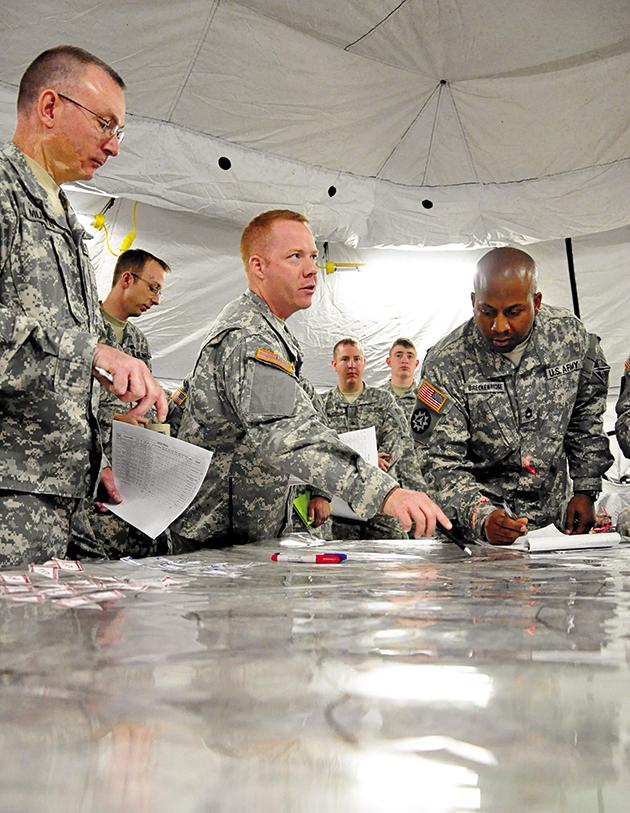In the world of modern warfare, the threat of blast-related injuries has become a harsh reality for military personnel. However, in a constant effort to protect and support our troops, advancements in technology and innovative strategies are being implemented to reduce the impact of these devastating injuries. In this article, we will explore how the military is actively working to mitigate the risks and enhance the safety of our brave soldiers on the front lines.
Innovative Technologies to Enhance Body Armor
One innovative technology that the military is exploring to enhance body armor and reduce blast-related injuries in troops is the use of smart materials. These materials have the ability to change their properties in response to different conditions, offering improved protection against blasts. By incorporating smart materials into body armor, soldiers can have better flexibility and mobility without compromising safety.
Another cutting-edge technology under consideration is the use of nanotechnology in body armor design. Nanomaterials are incredibly strong and lightweight, making them ideal for creating body armor that is both protective and comfortable to wear for long periods. By leveraging nanotechnology, the military aims to develop body armor that is not only more effective in stopping projectiles and blasts but also more breathable and less bulky for soldiers in the field.
| Advantages of smart materials in body armor: | Advantages of nanotechnology in body armor: |
|---|---|
| Adaptable to different conditions | Lightweight and strong |
| Enhanced protection | Comfortable to wear |
| Improved flexibility and mobility | Less bulky |
Training Programs to Improve Response to Explosive Devices
One of the key initiatives being implemented by the military to enhance the response to explosive devices is the development of advanced training programs. These programs are designed to equip troops with the necessary skills and knowledge to effectively handle blast-related incidents, thereby reducing the risk of injuries. Through a combination of classroom instruction, hands-on exercises, and simulation scenarios, soldiers will be better prepared to assess threats, mitigate risks, and respond swiftly in high-pressure situations.
By focusing on improving individual and team response tactics, the military aims to bolster the overall effectiveness of its personnel in dealing with explosive devices. Key components of these training programs include bomb detection techniques, proper evacuation procedures, post-blast assessment strategies, and the utilization of protective gear. With a strong emphasis on constant learning and skill-building, soldiers will be better equipped to navigate the complexities of modern warfare and protect themselves and others from the dangers posed by explosive devices.
| Training Program Features |
|---|
| Advanced bomb detection techniques |
| Hands-on simulation scenarios |
| Team response tactics training |
Research Focus on Developing Blast-Resistant Materials
Researchers in the military are currently focusing on developing blast-resistant materials to help reduce the number of blast-related injuries in troops. These materials are designed to better protect soldiers from the impact of explosions, minimizing the physical harm they may sustain in combat situations. This research is crucial in ensuring the safety and well-being of military personnel.
Some of the key features that these blast-resistant materials aim to incorporate include increased durability, flexibility, and shock absorption capabilities. By improving the resilience of these materials, researchers hope to provide better protection for troops facing explosive threats in the field. Through ongoing testing and development, the military is working towards enhancing the protective gear and equipment used by soldiers on the front lines.
Collaboration with Medical Experts for Advanced Treatment Options
The military is constantly seeking ways to enhance the safety and well-being of its troops, especially when it comes to blast-related injuries. Through collaboration with medical experts, innovative treatment options are being developed to reduce the impact of these injuries on military personnel. By leveraging the latest advancements in medical technology and research, the military aims to provide frontline soldiers with the best possible care in the event of blast incidents.
One of the key strategies being explored is personalized medicine, which involves tailoring treatment plans to individual soldiers based on their unique genetic makeup and medical history. This approach allows for more targeted and effective interventions, ultimately leading to better outcomes for troops injured in blast situations. Additionally, ongoing research into advanced prosthetics and rehabilitation techniques is also paving the way for improved recovery and quality of life for service members who have experienced blast-related injuries.
The Conclusion
the military is dedicated to the safety and well-being of our troops in the face of evolving threats. By implementing innovative technologies and strategies, we aim to significantly reduce blast-related injuries and ensure our soldiers can continue to serve with confidence and resilience. With a continued focus on research, training, and support, we are committed to providing the best possible protection for those who bravely defend our nation. Together, we will strive to create a safer and stronger military for the future.


